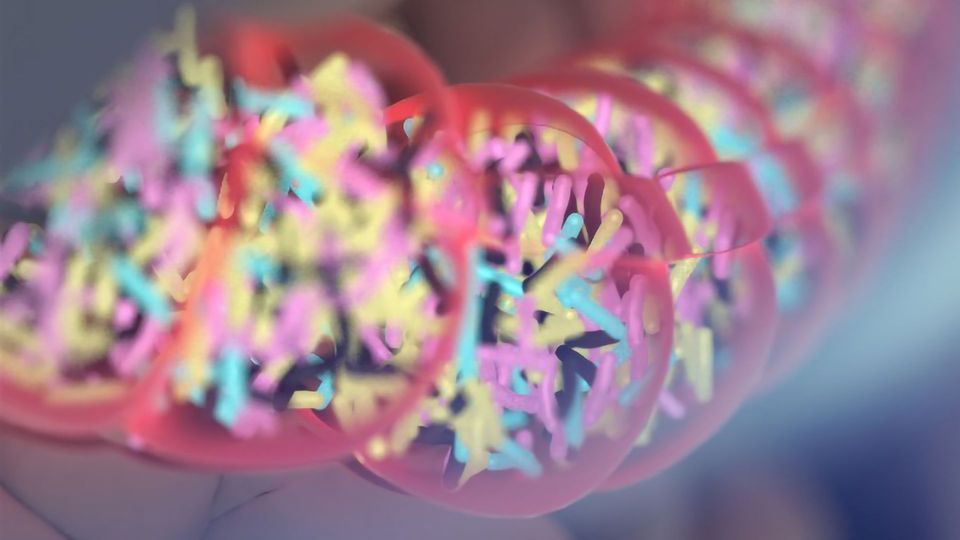The Gut Bacteria Microbiome Changes After Spinal Cord Injury

Want to listen to this article for FREE?
Complete the form below to unlock access to ALL audio articles.
Read time: 2 minutes
For the first time, researchers at The Ohio State University have used metagenomics sequencing to identify changes in gut bacteria and viruses that occur after spinal cord injuries (SCI) in mice.
Metagenomics allows researchers to better understand how the functions of diverse microbes and viruses relate by studying the collective DNA from a sample site, in this case, the gut microbiome of SCI-injured mice.
Study findings published online today in mSystems, an open-access journal published by the American Society for Microbiology.
The findings shed new light on the classification and role of diverse microbes – including viruses – that may help to better predict how the gut microbiome changes after traumatic SCI. These gut microbiome changes may hold the key to better understanding neurological and systemic outcomes after the SCI said Phillip Popovich, PhD, professor and chair of the department of neuroscience and executive director of the Belford Center for Spinal Cord Injury at The Ohio State University College of Medicine.
Popovich collaborated with Ohio State researchers from the colleges of Arts and Sciences, Engineering and Medicine, along with the Infectious Disease Institute; The Center for Brain and Spinal Cord Repair and the Medical Scientist Training Program.
Popovich collaborated with Ohio State researchers from the colleges of Arts and Sciences, Engineering and Medicine, along with the Infectious Disease Institute; The Center for Brain and Spinal Cord Repair and the Medical Scientist Training Program.
Researchers found that SCI affects many different bacteria and viruses: some increase, some decrease and some are virtually depleted by the injury. Using metagenomic sequencing, scientists could evaluate how SCI affects bacteria, archaea, fungi and viruses, and then predict the functional consequences associated with these changes in the microbial ecosystem of the gut.
Applying metagenomics to study mammalian microbiome is still a relatively new approach, but these techniques have long been used to understand microbial diversity in the oceans, said Matthew Sullivan, PhD, co-senior author of this study, professor in the department of microbiology and director of the Center of Microbiome Science at Ohio State. Using these techniques, his lab studies the impact on global biogeochemistry of viruses found in the ocean.
“This is an incredibly exciting time at Ohio State, where world-leading microbiome science capabilities can be applied to new research areas. Just like here, where we identify how microbes and their viruses change in response to spinal cord injury, this microbiome toolkit helps us better ’see’ microbial roles in diverse diseases. This changes how we approach personalized medicine and, more broadly, our understanding of the rules of life," Sullivan said.
During the study, researchers performed spinal cord injuries on the fourth thoracic spine (T4) or tenth thoracic spine (T10) in mice, then compared the results to mice receiving spinal surgeries without spinal cord injury, also known as “sham injuries.”
Metagenomic analyses were performed on fecal samples from the mice that were collected at baseline and three weeks post injury or surgery. They discovered these results after SCI:
The relative abundance of several beneficial bacteria decreased, while potentially pathogenic bacteria increased.
Microbial genes encoding proteins for tryptophan, vitamin B6, and folate biosynthesis – the essential pathways for central nervous system function – were reduced.
Viruses of beneficial bacterial hosts decreased, while viruses of pathogenic bacterial hosts increased.
“We’re learning how the different levels of spinal cord injuries will have distinct effects on the gut and the microbiome,” said Popovich, who’s also a member of The Ohio State University Wexner Medical Center Neurological Institute. Although the microbiomes and viromes changed in all mice with spinal cord injuries, some changes were notably enhanced in mice with higher level spinal injury. “These findings are the first steps to developing therapies and treatments for humans in the future.”
Reference:
Du J, Zayed AA, Kigerl KA, Zane K, Sullivan MB, Popovich PG. Spinal Cord Injury Changes the Structure and Functional Potential of Gut Bacterial and Viral Communities. mSystems. 2021;6(3). doi:10.1128/mSystems.01356-20
This article has been republished from the following materials. Note: material may have been edited for length and content. For further information, please contact the cited source.
Reference:
Du J, Zayed AA, Kigerl KA, Zane K, Sullivan MB, Popovich PG. Spinal Cord Injury Changes the Structure and Functional Potential of Gut Bacterial and Viral Communities. mSystems. 2021;6(3). doi:10.1128/mSystems.01356-20
This article has been republished from the following materials. Note: material may have been edited for length and content. For further information, please contact the cited source.

